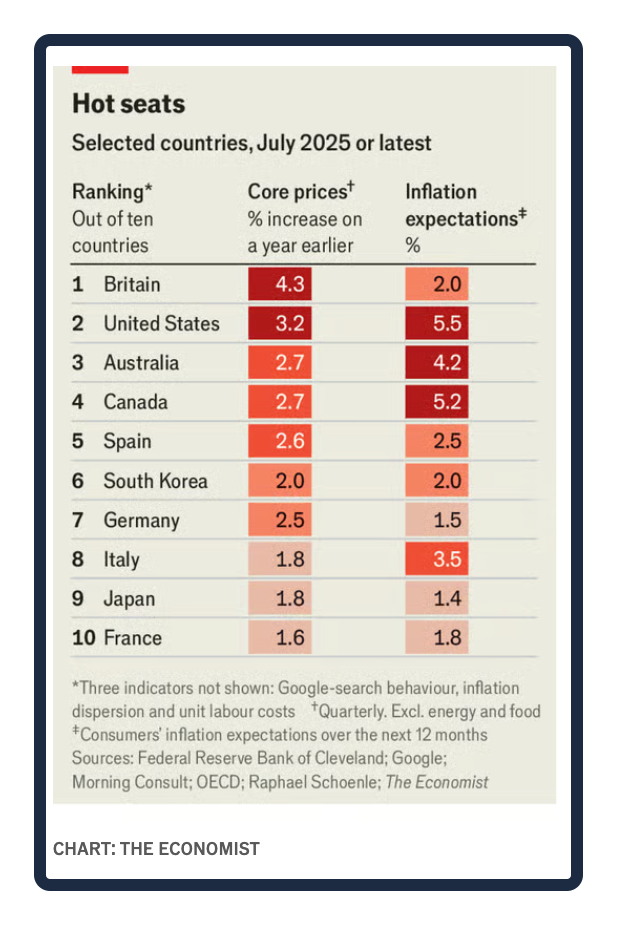
How a Big Decision Affects Our Small Packages
August 24, 2025
What Longer Summers Will Cost Us
August 26, 2025During this past week at Jackson Hole, Federal Reserve Chairman Jerome Powell talked about inflation.
His comments were not quite what The Economist recently concluded.
Federal Reserve Policy Challenges
Jackson Hole Address
In a much-awaited August 22nd speech, Chair Powell expressed concern that the U.S. labor market could be softening. Observing that there was a “… marked slowing in both the supply of and demand for workers, …” he hinted that a rate cut might be appropriate. Although the inflation uncertainty created by tariff hikes remained, he said that risks were shifting. While tariffs could boost prices, their impact could be a one-time pop that rippled throughout the economy. As a result, the tariff impact could have a short life.
The Economist
By contrast, using data from 10 affluent countries, The Economist concluded that inflation had deep roots in the U.S. and other English speaking nations. At the same time, “inflation entrenchment” was less of a threat in the EU and Asia.
They quantified inflation entrenchment with five metrics:
- core inflation (CPI excluding gas and food),
- unit labor costs,
- inflation expectations
- inflation dispersion
- Google-search behavior

Our Bottom Line: Inflation
When economists explain inflation, they say the cause could be “demand pull,” or “cost push,” or a single commodity or policy. On the demand side of markets, when too many of us have lots to spend (from government checks, lower taxes, or lower interest rates), we bid prices higher. Then, on the supply side, cost push inflation takes us to more expensive land, labor, or capital. And, somewhat similarly, a single commodity or policy can have a widespread impact as when 1970s rising oil prices nudged all prices skyward. Like higher oil prices, tariffs fit into this third inflation slot.
Citing two percent as their goal, economists worry about a higher inflation rate. Although they know that higher rates constrain growth, they willingly increase interest rates to slow spending. Or, using the monetarist solution, they maintain the appropriate money supply.
The Fed, however, has to remember a dual mandate that says it should encourage stable prices and high employment. Now, with both a potential problem, it risks making one worse while the other improves.
My sources and more: While there were countless other possibilities, this WSJ article had a good summary of Jerome Powell’s Jackson Hole address. Then, for a somewhat different perspective, we have the Inflation survey from The Economist.
![econlifelogotrademarkedwebsitelogo[1]](/wp-content/uploads/2024/05/econlifelogotrademarkedwebsitelogo1.png#100878)




